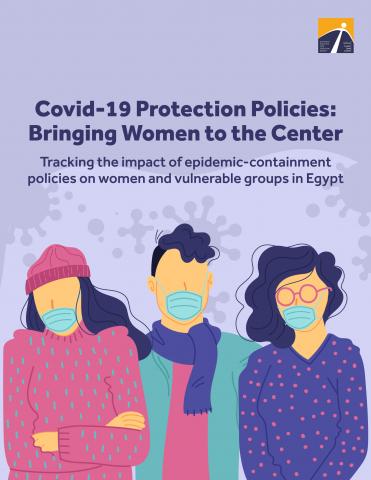Covid-19 Protection Policies: Bringing Women to the Center
Tracking the impact of epidemic-containment policies on women and vulnerable groups in Egypt
Introduction:
In times of major social crisis, a gendered and feminist perspective exposes the priorities and biases of public policy. It is also an important lens for evaluating the capacity of policies -or lack thereof- to meet the needs of women and vulnerable social groups as a whole, while highlighting their disproportionate impact on these groups, which constitute the majority of the population. For these reasons, today we launch a gender tracker to monitor the impact of the COVID-19 epidemic on women and other vulnerable social groups in Egypt. We hope that a gendered perspective will allow opportunities to remedy measures that do not consider gendered impacts or avoid public policies that could harm certain groups
Our analysis sides with groups that are typically sidelined in the design of public policies, including women and girls, the pooror people at risk of poverty, people who are sick or living with a chronic illness or disability, individuals whose sexual orientation and/or gender identity does not conform to socially-sanctioned norms, prisoners, migrants, stateless persons, and undocumented people. We will provide regular updates and commentary on public policies to combat the health, economic, and social impacts of COVID-19, offering recommendations aiming to mitigate any adverse impact of government measures, and to protect a majority of the populace—particularly women—from any ramifications of these policies. We will regularly update the tracker with inputs in line with relevant developments. And we invite you to join us by offering gender-focused analyses and recommendations for public policy. We begin with four proposed measures to address priorities that were absent from the government coronavirus package or received only cursory treatment.
Follow the link to read the update: Tracking the impact of epidemic-containment policies on women and vulnerable groups in Egypt
Released 28 March 2020
Last update 17 May 2020 (Latest updates are highlighted in yellow for convenience)




